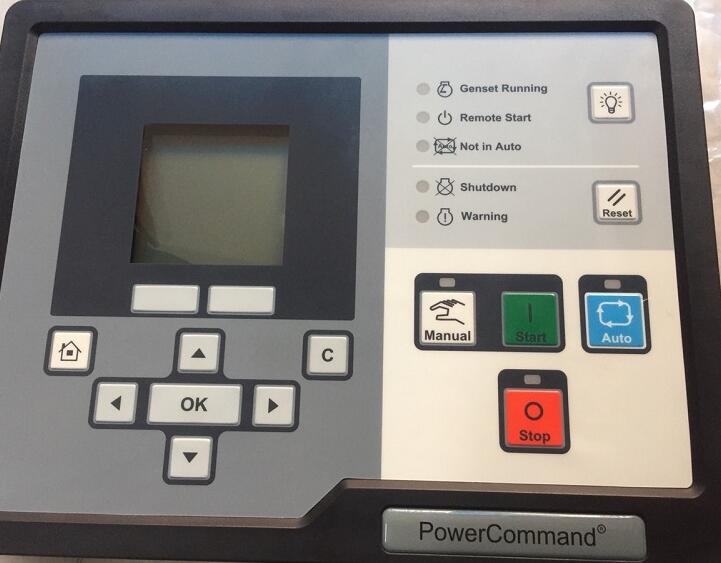This instruction show you guide on how to solve PCC1302 command controller fault code 146 engine coolant temperature above normal warning error.

Preparations:
2023 InPower V14.5 Pro V12 Diagnostic Software Free Download
PowerCommand Diagnostic 9 Pin Adapter Cable for InPower
Engine coolant temperature has exceeded 225° F (107.2° C) for greater than 5 seconds.
Possible Cause:
1. High ambient temperature
2. Radiator blocked
3. Louvers are closed or damaged
4. Charge air cooler fins or radiator fins are damaged or obstructed
5. Coolant level is below specification
6. Antifreeze and water mixture is not correct
7. Fan shroud is damaged or air recirculation baffles are damaged
8. Fan belt is broken or loose
9. Fan drive or fan controls are malfunctioning
10. Radiator cap is not faulty
11. Thermostat is faulty
12. Cooling system hose is collapsed, restricted or leaking
13. Intake manifold air temperature is above specification
14. Cooling system is contaminated with dirt, scale, or sludge
15. Water pump is malfunctioning
16. Air or combustion gases are entering the cooling system
17. Inaccurate coolant temperature sensor
18. Fault simulation feature is enabled
19. Incorrect threshold setting
Diagnosis and Repair:
1 High ambient temperature
a Using thermocouple verify air temperature entering intake louver of generator.
b Reduce loads or recirculation of discharge air to generator in elevated ambient.
2 Radiator blocked
a Inspect for dirt, debris or obstructions.
b Remove blockage or winterfront as applicable.
3 Louvers are closed or damaged
a Inspect louvers for proper operation.
b Repair or replace if damaged.
c Check louver motor for proper operation.
d If louver motor is operational, verify louver shutterstat is operational.
4 Charge air cooler fins or radiator fins are damaged or obstructed
a Inspect for dirt, debris or obstructions.
b Clean if necessary.
5 Coolant level is below specification
a Inspect the engine, cooling system, and surrounding area for external coolant leaks.
b Repair as required.
c Inspect the coolant level is correct via the sight glass.
d Add coolant as necessary.
6 Antifreeze and water mixture is not correct
a Verify the concentration of antifreeze in the coolant. Add coolant as necessary.
7 Fan shroud is damaged or air recirculation baffles are damaged
a Inspect shroud and baffles for damage and clearance.
b Repair or replace if damaged.
8 Fan belt is broken or loose
a Inspect belt(s) for damage, wear, and proper tension
b Repair or replace if damaged or worn.
9 Fan drive or fan controls are malfunctioning
a Inspect pullies and belt tensioner for damage or wear.
b Repair or replace if damaged or worn.
10 Radiator cap is not faulty
a Inspect radiator cap and gasket for damage and proper pressure operation.
b Replace if damaged or worn.
11 Thermostat is faulty
a Remove thermostat and inspect/test for proper operation.
b Replace if damaged or malfunctioning.
12 Cooling system hose is collapsed, restricted or leaking
a Inspect upper and lower radiator hoses for collapse, distortion, or fluid leaks.
b Replace if damaged or worn.
13 Intake manifold air temperature is above specification
a Use a thermocouple to verify manifold air temperature.
b Repair or replace faulty after cooler components.
14 Cooling system is contaminated with dirt, scale, or sludge
a Inspect cooling system components for external contaminates and clean as required.
b Open radiator cap and inspect for contaminated coolant and scale.
c Flush cooling system per engine service manual.
15 Water pump is malfunctioning
a Inspect water pump for proper operation.
b Replace if damaged or worn.
16 Air or combustion gases are entering the cooling system
a Inspect engine for head gasket leak.
b Repair or replace faulty components.
17 Inaccurate coolant temperature sensor
a Using a thermocouple or similar device, measure coolant temperature near sender and compare to coolant temperature displayed.
b Verify the temperature sender resistance and compare to specifications called out in the engine manual.
c Verify continuity from temperature sender wire pin to engine ECM pin. Harness resistance should be less than 5 Ohms.
d Repair or replace faulty components or wiring
18 Fault simulation feature is enabled
aUse the service tool to connect to the engine ECM and verify fault override toggle is disabled.
b Reconfigure generator and disable fault overrides.
19 Incorrect threshold setting
a Use the service tool to connect to the engine ECM and verify fault threshold settings and compare to the specifications called out in the engine manual.
b Verify ECM and PCC calibration number and revision is correct.
c Recalibrate the engine ECM to reset the threshold settings.